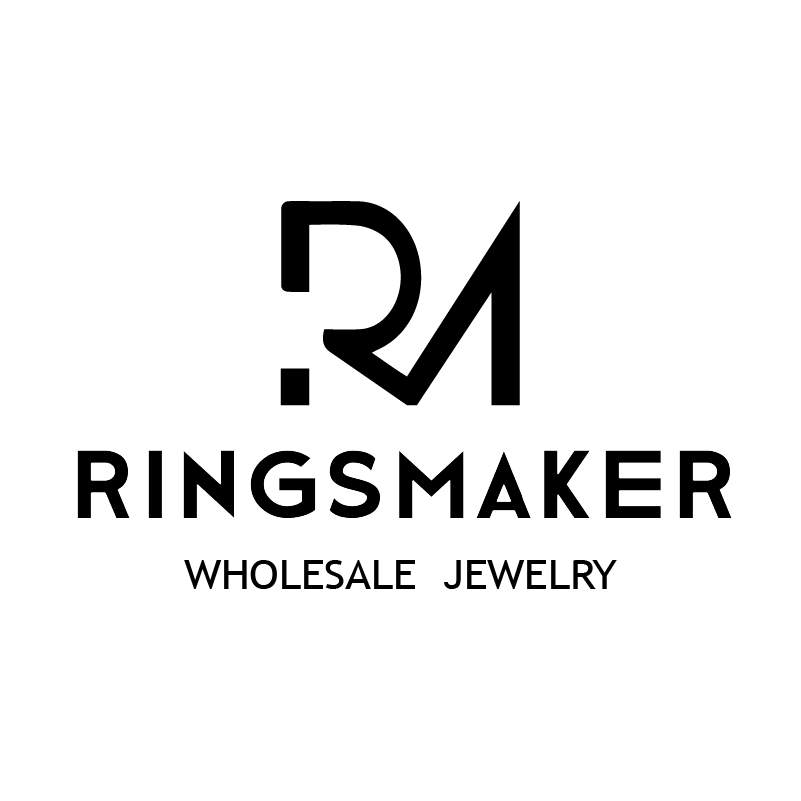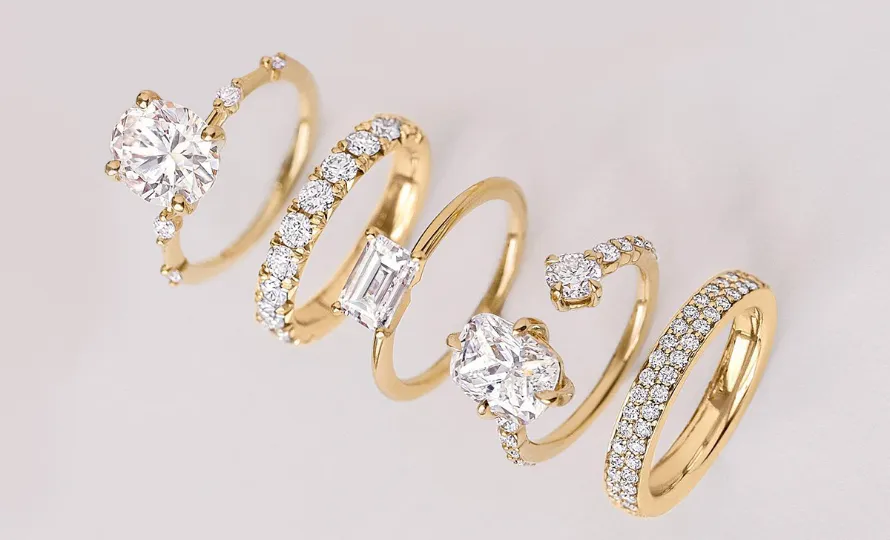Have you ever dreamed of starting your online jewelry business and turning your creative passion into a lucrative career? With the global jewelry industry expected to reach a staggering $418 billion by 2026, there’s never been a better time to tap into this flourishing market.
However, launching an e-commerce jewelry store is not as simple as creating a few pretty pieces and setting up an essential website. To build a successful brand that stands out from the competition, you need the right foundations – from comprehensive business planning and branding to effectively sourcing reliable manufacturers and marketing.
This comprehensive guide breaks down the essential steps for how to start a jewelry business online. Drawing key insights from experienced jewelry entrepreneurs and e-commerce experts, we will uncover crucial considerations around:
- Defining your niche and identifying gaps in the market
- Building a polished online store optimized for conversions
- Creating an iconic brand identity that resonates with your audience
- Balancing quality and affordability with your production methods
- Capturing high-impact product photography
- Leveraging social media and influencers for organic reach
By the end, you’ll have an actionable roadmap for launching your own profitable online jewelry empire from scratch.
So let’s start turning your creative passion into a thriving e-commerce success!
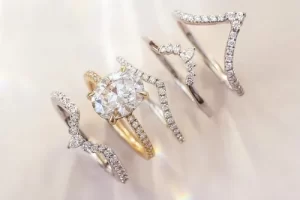
Make a Business Plan
Getting your online jewelry business off the ground starts with careful planning and research. Taking the time to analyze the market, refine your offering, and map out budgets and goals will pay dividends.
Conduct Market Research
Thorough market research is crucial for identifying opportunities to differentiate yourself. Assess the competitive landscape by checking out other jewelry stores online. What styles and products do they offer? How are they positioning themselves and who is their target audience? Look for gaps in the market that your unique designs could fill.
Monitoring industry news sites and fashion blogs also gives insight into the latest jewelry trends. For example, charm bracelets and vibrant resin pieces have grown increasingly popular. Understanding what’s hot right now helps inform what customers want.
Analytical tools like Google Trends are useful for confirming interest over time. See which jewelry search terms spike at different times of year or events. “Jewelry gifts” peak around the winter holidays, for instance.
Define Your Target Audience
Get very specific about the customers you want to serve. Detail their demographics, psychographics, buying habits, and even their aspirations. Knowing your audience inside and out means you can cater offerings directly to their preferences.
For instance, instead of targeting engagement ring shoppers, what about focusing on couples wanting ethical, customized rings on a budget? Defining a tight niche makes it easier to hone in with relevant messaging.
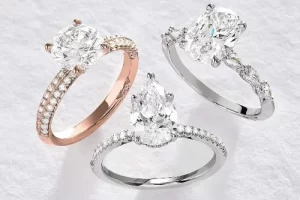
Make a Budget
Be realistic about the costs of starting a jewelry business, from materials and manufacturing to marketing and photography expenses. Building a detailed budget gives you a benchmark for measuring success.
Plan out financial goals tied to sales and growth milestones. And investigate available business loans or financing options in case extra capital is needed to scale up or bridge cash flow gaps.
Decide on a Niche
Further, focus your online store on fine jewelry or more affordable fashion pieces. Fine jewelry sold at higher price points involves precious metals and gemstones. Fashion jewelry uses less expensive materials but has a broader appeal for gifting and daily wear.
You might also niche into product lines like chokers, stacking rings, or engraved ID bracelets. Or specialize around occasions like proposals, anniversaries, and weddings. Finding an underserved sliver of the market boosts the chances of being discovered.
Determine Production Method
Finally, decide whether you’ll handcraft pieces yourself or outsource manufacturing. Making items in-house allows for customization and quality control but doesn’t easily scale. Third-party production can speed the fulfillment of larger orders yet reduce oversight.
Other jewelry supply options include print-on-demand, where pieces are 3D printed per order, and dropshipping pre-made inventory from vendors. Weigh pros and cons to choose the creation process fitting skills, budgets, and growth ambitions.
Building out this initial business framework guides the next steps for branding, marketing, and launch. Adjust details as needed but maintain a clear direction for your online jewelry store by sticking close to your core customer and what makes their jewelry experience with you exceptional.

Choose a Memorable Business Name
Your business name makes a strong first impression so brainstorm creative ideas that reflect your jewelry niche and story. Aim for something unique, meaningful, and easy to remember.
Check domain name availability to utilize the same name across your online platforms. A matching domain adds legitimacy and helps customers find you. Conduct trademark research, too so you don’t unintentionally choose a name already trademarked or similar to another business.
A name resonating with your brand identity gives a boost right out of the gates. It becomes an asset reinforcing your offerings and standing out in a crowded market. Whether inspired by your journey or conveying the essence of your pieces through descriptive language, let your moniker make an instant emotive connection.
Build Your Online Store
Creating a polished, professional-looking website establishes credibility for any jewelry business. Your storefront makes that pivotal first impression – conveying quality and trust at a glance. Investing in a thoughtfully designed platform ensures seamless shopping, driving sales through optimized user experiences.
Get a Domain Name and Web Hosting
Start by purchasing a domain name that matches your jewelry store’s moniker using a registrar like GoDaddy or Namecheap. Opt for a .com over alternatives for universality. Then set up web hosting to store your site’s data and make it accessible online 24/7.
Popular managed WordPress hosts like Bluehost, SiteGround, and Kinsta offer optimized servers, SSL certificates, and auto updates. The cost ranges from $3-$15 monthly for entry tiers. When selecting plans, evaluate storage needs, site traffic expectations, and customization flexibility.

Install WordPress and WooCommerce
Leverage WordPress and WooCommerce to create customizable, e-commerce-enabled websites without coding. These open-source platforms handle content management plus shopping functionality out of the box.
Most web hosts provide auto WordPress installation. From there, adding WooCommerce’s free plugin activates components every online store requires – carts, checkout, products, orders, and more. Expand core features as needed via extensions.
Pick a Theme and Customize
For aesthetics, start with an easy-to-customize WordPress theme supporting WooCommerce. Check out MultiStore for a flexible jewelry layout with room for growth beyond product pages. Or Gazette for an editorial vibe.
Install your shortlisted themes to preview before deciding. Then utilize template design tools and settings to match branding – featuring colors, fonts, and on-brand images. Don’t just settle for default components. Craft distinct pages through strategic visual and textual content tailored to your products and customers.
Essential Online Store Pages
While unique offerings deserve their pages, jewelry stores should stick to certain conventions and best practices proven to nurture browsing and increase conversions.
Your homepage makes first impressions so keep it focused on showcasing must-have pieces backed by bold imagery and minimal distractions. High-converting category pages feature sorting and filter options. Curate products by style, material, price point, or gemstone.
Embed video on About pages to share founders’ stories. Show behind-the-scenes design processes for authenticity. Don’t overlook an FAQ, either. Proactively answering purchase qualms like shipping times or return policies builds trust. Guaranteeing safe and satisfying transactions removes friction from checkout.
As the backbone of enabling e-commerce, well-crafted pages make or break online jewelry ventures. Keep refining until site navigation flows intuitively and offerings captivate at every turn. Consistently reinforce branding from storefront to product close-ups to packaging for an immersive experience where the real world meets the dream jewelry box.

Create Your Brand Identity
Customers buy from brands they feel a personal affinity for. Start forging that emotional connection through consistent branding that sets you apart. Define an authentic voice and style reflecting what your jewelry stands for.
Define Your Brand Mission and Voice
Get very clear on the audience you serve through descriptive buyer personas. Detail demographics plus beliefs and attitudes shaping their purchasing decisions. Then craft a mission statement declaring your jewelry’s purpose and passion.
This brand foundation informs the tone and vocabulary you adopt in in-store copy and ads. Be the wise friend dispensing styling confidence – not pretentious, but still polished. Balance classic elegance around fine materials with accessible language scaling knowledge barriers.
Build Distinct Visual Branding
Visuals equally establish recognition. Develop a logo that encapsulates your personality into an iconic mark. Repeat it across branding touchpoints – packaging, invoices, newsletters.
Likewise, define brand colors and typographic signatures through fonts and text styling applied website-wide. Photographic styles also set expectations. Shoot flat lays spotlighting design details alongside lifestyle imagery demonstrating wearability spanning occasions.
Ensure branding decisions shape a cohesive jewelry experience beyond the website to every customer interaction. Strong alignment between mission statement values and their expressions in voice guidelines and visual assets makes your message unforgettable.
Share the Story Behind Your Jewelry Brand
Share your founder’s journey through an authentic About page narrative. Detail motivations, challenges overcome, and future company visions to find resonance. Support visually through behind-the-scenes production shots.
Storytelling builds rapport, so also open up on social media. Let audiences in on inspiration striking unexpectedly on travels overseas or intriguing gemstones discovered at trade shows.
This authentic transparency allows visitors to envision themselves sharing those moments by sporting your jewelry. Ultimately you are selling more than just accessory adornments but memories made special when your pieces feature prominently. So constantly reinforce what emotional need you fill through ongoing storytelling.
Source Jewelry Products
Unless exclusively dropshipping or utilizing print-on-demand, inventory needs replenishing. Sourcing sufficient materials for handcrafting or working with manufacturers to replicate designs requires planning.
- Seeking domestic suppliers facilitates inspecting gemstones and metals in person pre-purchase
- Attend industry trade shows to meet vendors and discover limited-edition components
- Browse bead fairs and antique markets for inspiration that translates into distinctive motifs
For unique pieces where quality control matters, producing in smaller batches domestically brings fulfillment closer to home. Larger orders can leverage overseas factories boasting specialized equipment that is hard to access independently. Thorough vetting of any partners is essential through requesting samples and checking references before fully outsourcing production.
Alternatively, convenience can be opted for via print-on-demand platforms housing designers eager to transform digital files into physical realities. The ability to simply upload your designs for rendering into stainless steel or gold-plated jewelry makes order management quite simple through these services’ streamlined site interfaces.
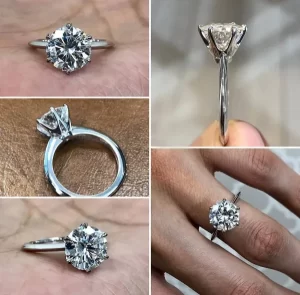
Professional Product Photography
Showcasing adequately lit jewelry against pure white backdrops emphasizes pristine finishes and details often lost at a miniature scale. Investing in a basic lightbox setup with backlights and diffused front-fill illumination helps direct attention to the pieces.
- Use acrylic displays to elevate and suspend jewelry midair
- Capture earrings against skin-toned cards to demonstrate scale
- Invest in a motorized turntable for dynamic 360-degree videos
Supplementing clinical catalog shots with styled lifestyle images inserted into website galleries and social media helps showcase personality and wearability creatively. While this content excels at inspiration, maintaining some consistent catalog-minded images still aids findability when dealing with hundreds of SKUs.
Remember to photograph all categories carried; great photos sell the customer experience as much as the jewelry itself.
Set Competitive Pricing
Calculating acceptable margins requires balancing production expenses against perceived value and positioning. Surveying competitor rate cards for similar materials and aesthetics establishes pricing baselines and expectations.
- Analyze sales velocities across various price points to plot demand curves
- Account for currency considerations when selling overseas
- Temporarily raise prices on bestsellers to gauge ceiling thresholds
Willingness to pay thresholds can be tested through limited-time sale events with discounts that help estimate price elasticity differences across jewelry categories. While conversion rates, margins, and sell-through percentages all help quantify ideal recurrent price points for revenue maximization, pricing also affects brand positioning and perceptions.
Premium materials accommodate favorable markups that ensure parity with other luxury sellers. Yet accessibly priced daily silver and synthetic pieces attract mass market gifting occasions instead, requiring tailored messaging to reach both audiences effectively.
Market Your Online Store
Launching a website is just the first step – filling it with traffic and customers requires strategic marketing outreach spanning multiple channels. Tailor messaging to ideal demographics uncovered earlier while highlighting what sets your jewelry apart.
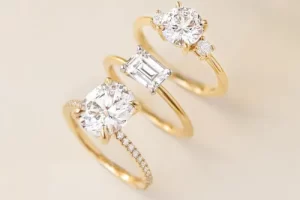
Content Marketing
- Blog about care tips for different jewelry materials, styling suggestions per occasion and trend reports/runway roundups to establish niche authority
- Optimize website copy and metadata for keywords potential customers use during initial research phases
Keep blog posts practical yet infused with brand personality and lush visuals – 2000 word odes to your design muse can come later. Early on, focus on search visibility through valuable advice distinguishing your specialty while illustrating unique perspectives on the jewelry industry.
Email Marketing
Build that audience database to directly engage through lead magnets offering exclusive peeks into new collections or production methods in exchange for emails. Personalized drip campaigns that nurture subscribers by style preferences and past purchases retain and reward your earliest brand loyalists.
Segment new signups as leads versus verified customers – promotional messaging should escalate across groups to those more likely to purchase again. Time messaging around new launches and gifts-giving season across various cultures.
Social Media Marketing
The behind-the-scenes glimpse remains irresistible, especially highlighting intricate steps outfitted in your signature colors and materials. But also consider select influencer partnerships and organic styling opportunities. Are micro influencers with engaged niche followings already wearing and raving about designs from brands similar to yours? Send a few gifted items and encourage unique shoots reflecting their aesthetic spun from provided brand guidelines.
Smaller independent voices often convert followers more readily than broad celebrity endorsements lacking authentic connections. Spearhead such initiatives through complimentary products and suggested captions/hashtags.
PR and Events
Local magazine pitches for founder profiles combine with trunk shows at partner boutiques, helping display your jewelry in context alongside artisan wares targeted buyers already love. Host quarterly subscriber shopping nights offering wine, mini makeovers, and advance access to promotions.
The story behind each season’s assortment turns browsers into investors in your brand’s journey. Forge direct relationships even digitally through consistent value and delight, transforming one-off purchases into lifelong brand devotees.
Analyze and Improve
Launching your jewelry website is just the first step. Sustained growth depends on regularly evaluating performance and optimizing based on insights uncovered.
Review Website Analytics
Install Google Analytics to unlock a dashboard monitoring vital site metrics. Track overall traffic volumes to gauge awareness efforts. Drill down on landing pages and products driving conversions. See which blog posts or email campaigns influence buying journeys.
Equally, assess off-site metrics – are social promotions expanding reach? Does search visibility for priority keywords climb over time? Connect analytics to shape better-informed marketing.
Run A/B Tests
Take the guesswork out of optimizing pages by experimenting with site variations. A/B testing tools simplify testing differing page layouts, product descriptions, or calls to action. Statistical significance indicates which version better persuades visitors to guide successive redesigns.
Listen to Customer Feedback
Solicit input through surveys and reviews. Complaints reveal pain points, while testimonials highlight strengths through authentic praise. pattern recognition across responses pinpoints weaknesses and priorities for the enhancement roadmap.
Expand Your Collections
Glean ideas for new items or extensions of top sellers by attending trade shows or analyzing customer wish lists and browsing patterns for gaps. Limited edition sets or collaborations with similar brands also revive interest while scaling production efficiently.
Continually self-reflect without ego to admit current weak spots. Customer-informed agility cements reputation for caring about buyer delight over maximizing short-term sales. Keep that integrity top of mind with every business decision made.
Manage Shipping, Taxes, and Operations
Behind-the-scenes infrastructure impacts customer satisfaction as much as slick e-commerce experiences. Calculate shipping rates accurately while local pickup retains lower overheads. National postal services speed domestic fulfillment but require integration, while international couriers ensure gifts arrive worldwide.
Research tax obligations for online jewelry businesses in your region and expand into new countries. Streamlined order processing flows using inventory management software to prevent overselling. Barcode scans maintain real-time accuracy across high sku counts.
- Set shipment notifications and delivery date estimates to manage expectations
- Enable self-service returns through prepaid shipping labels
- Utilize POS systems for efficient in-person sales
Provide exceptional customer service as the backbone ensuring repeat purchases. Response timeliness and tone matter more than pure problem resolution. Empower support teams to resolve most issues yet track and learn from insights uncovered. Management self-awareness and accountability to build goodwill and loyalty even when things go awry.
Cultivating truly holistic support required in an online jewelry business pays dividends through receptiveness to feedback and agility, improving weak links proactively before customers complain. Progress sometimes necessitates admitting operational deficiencies to address transparently.
